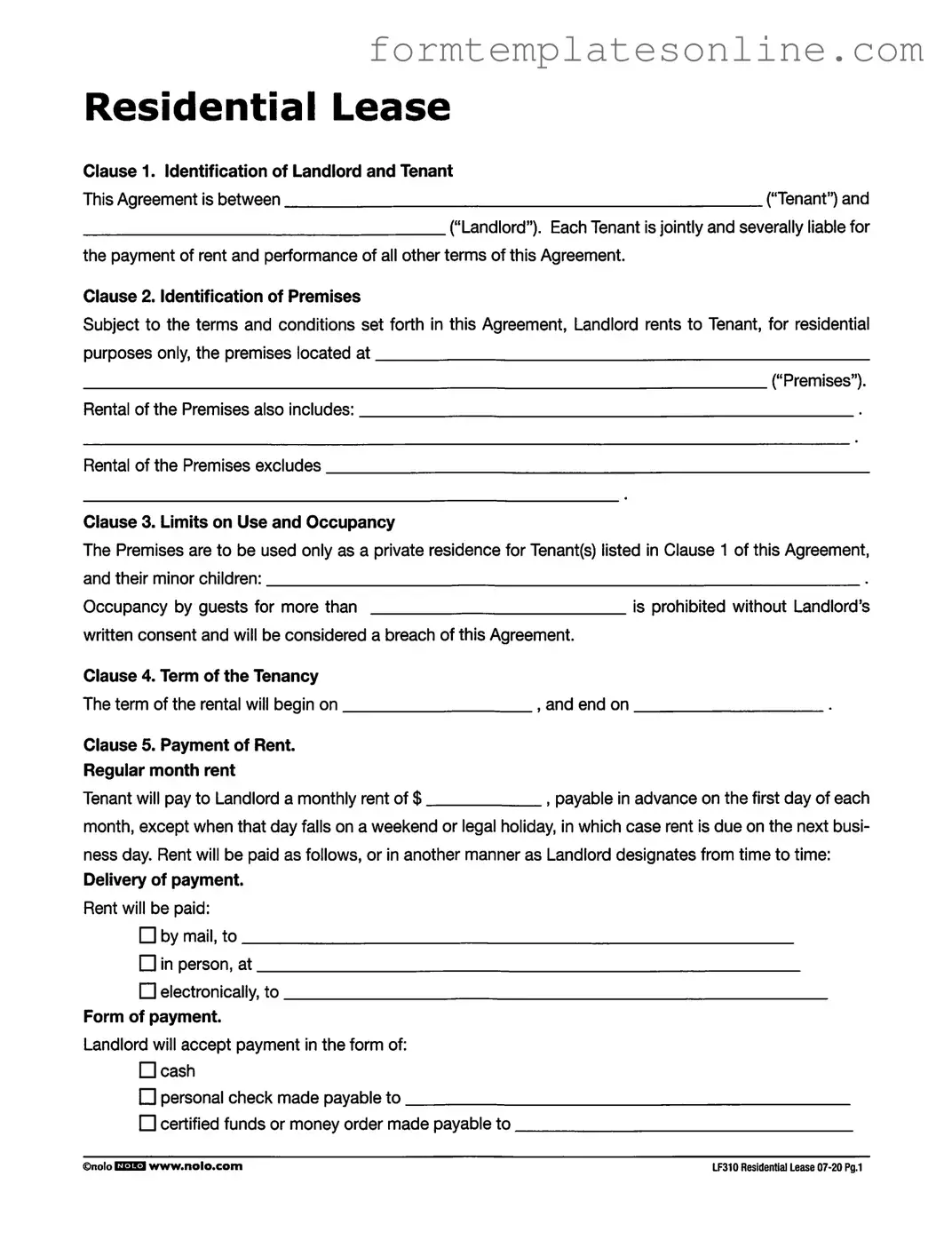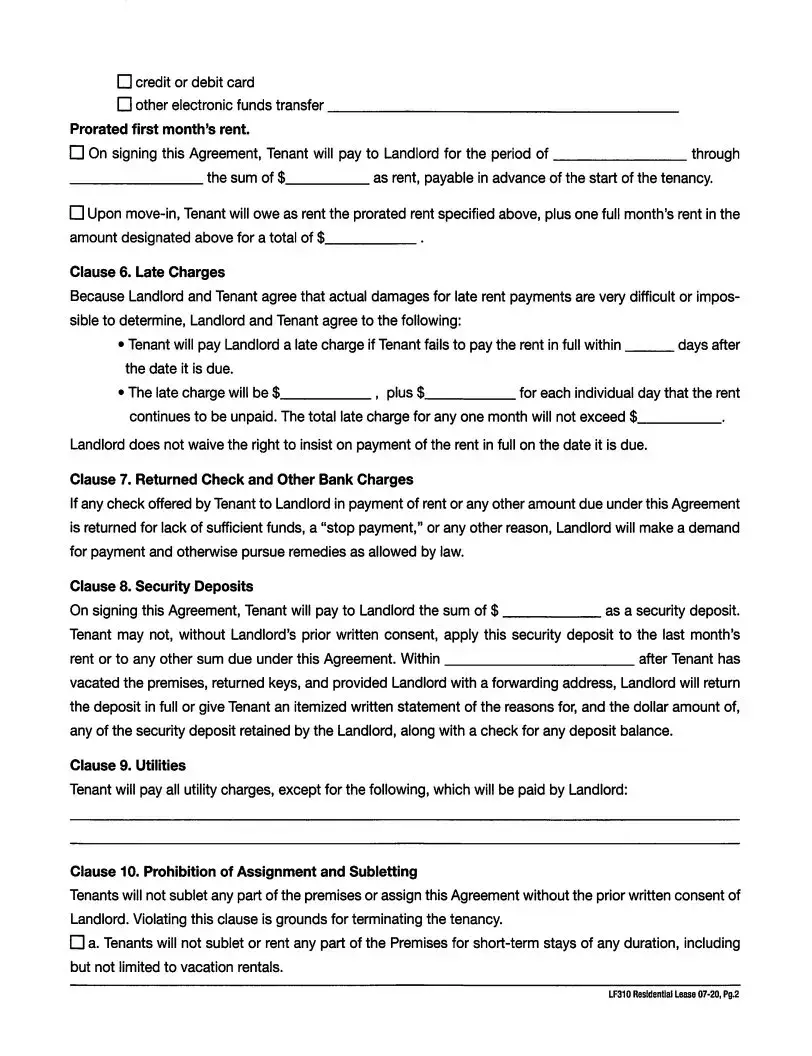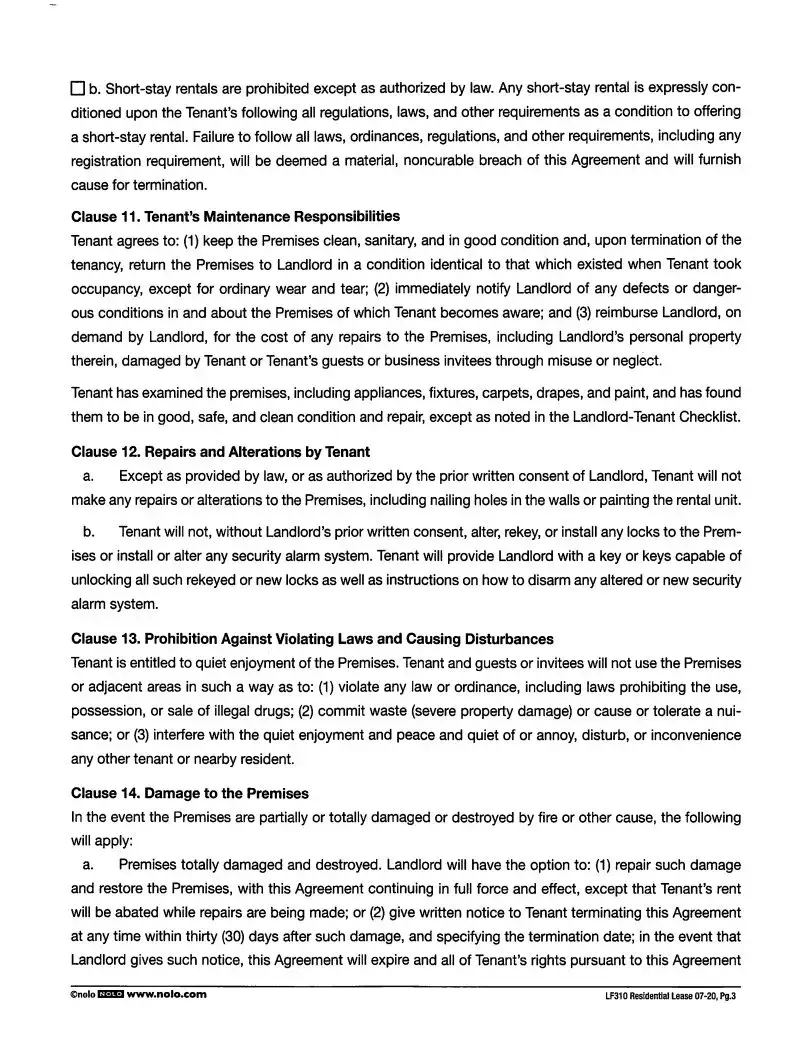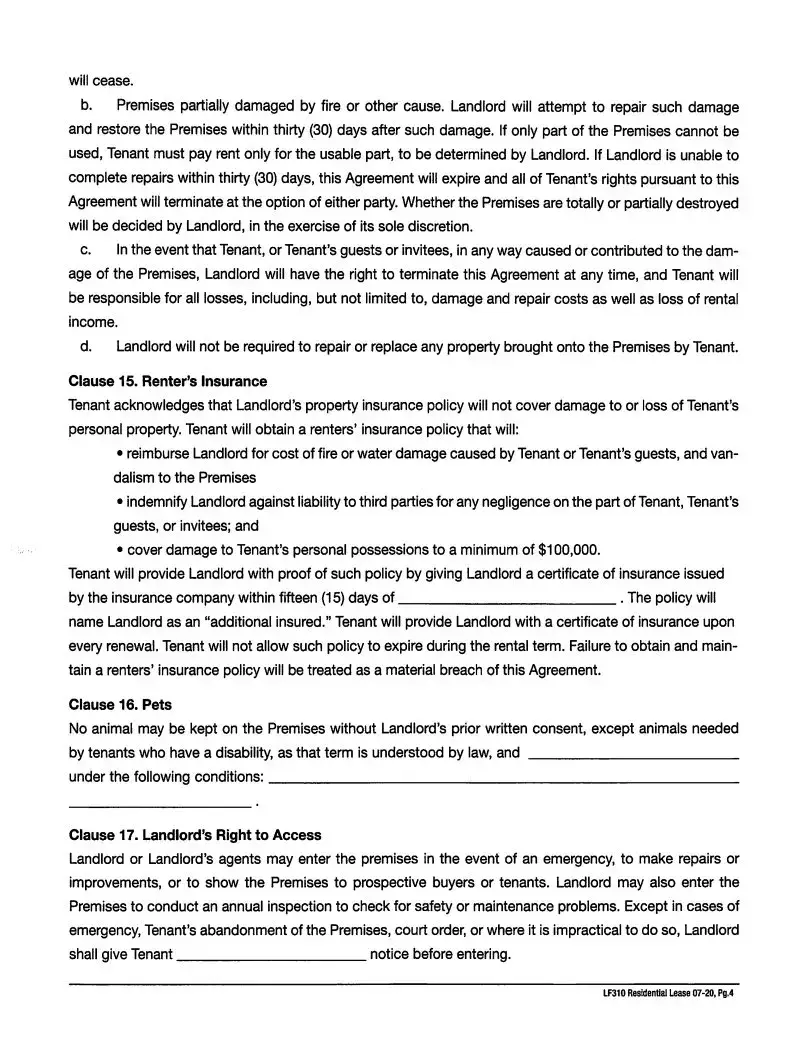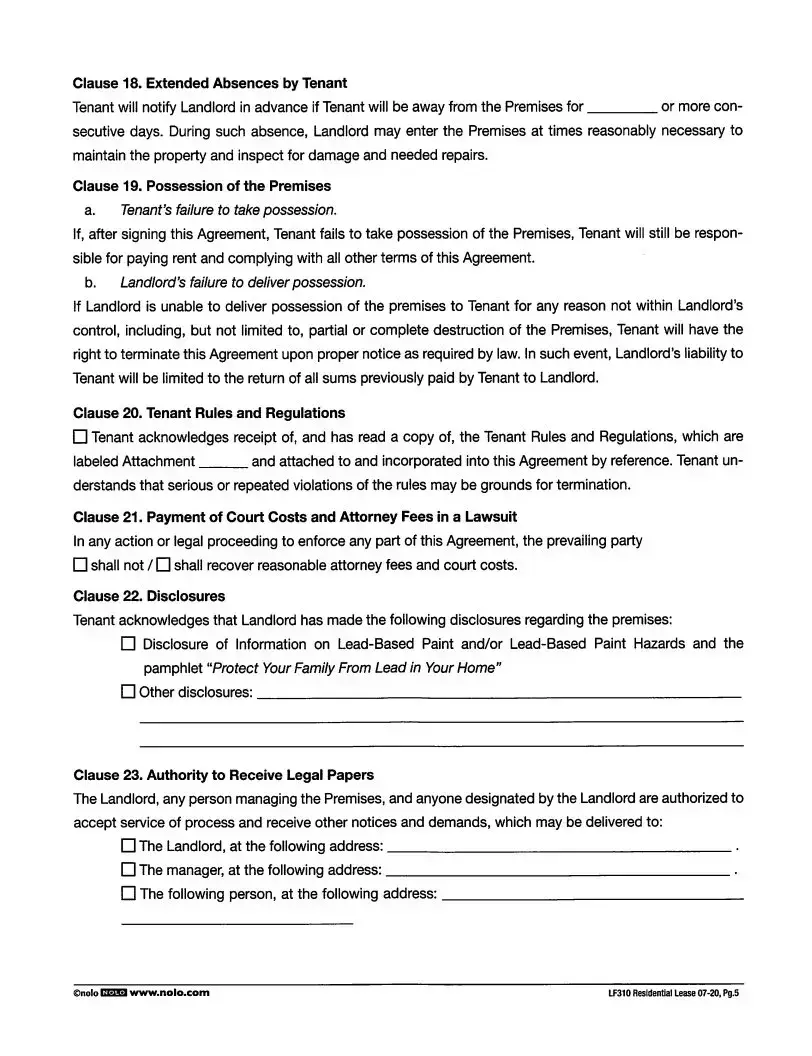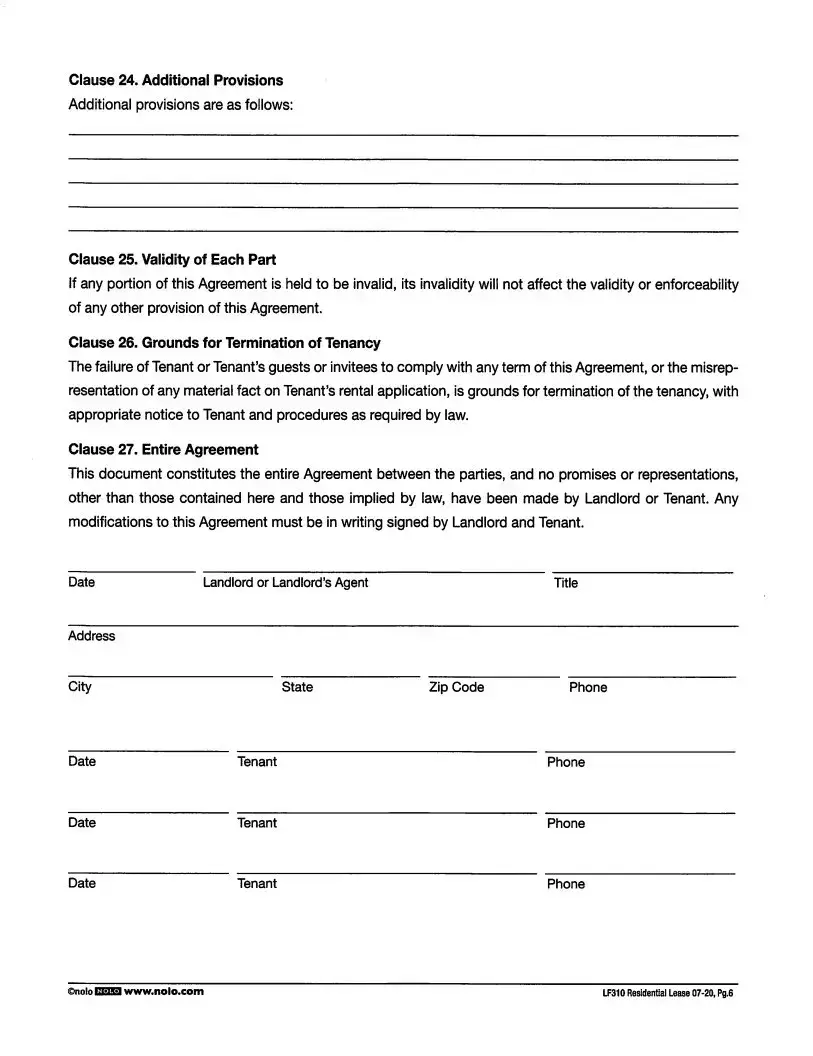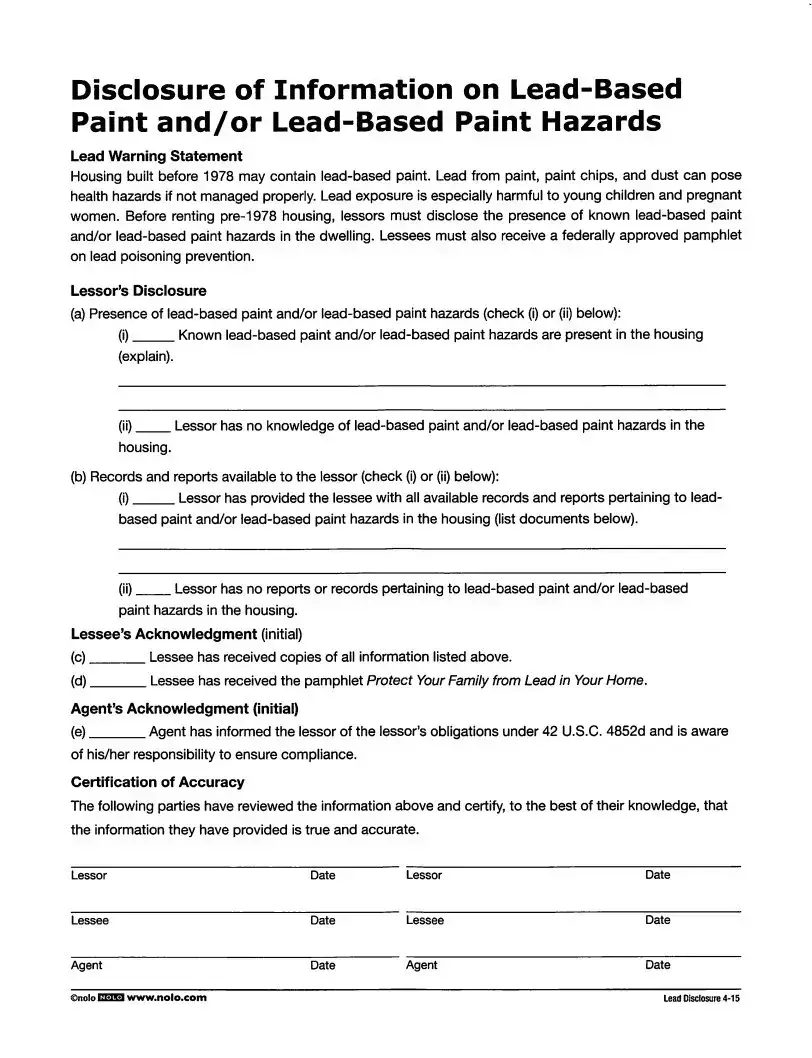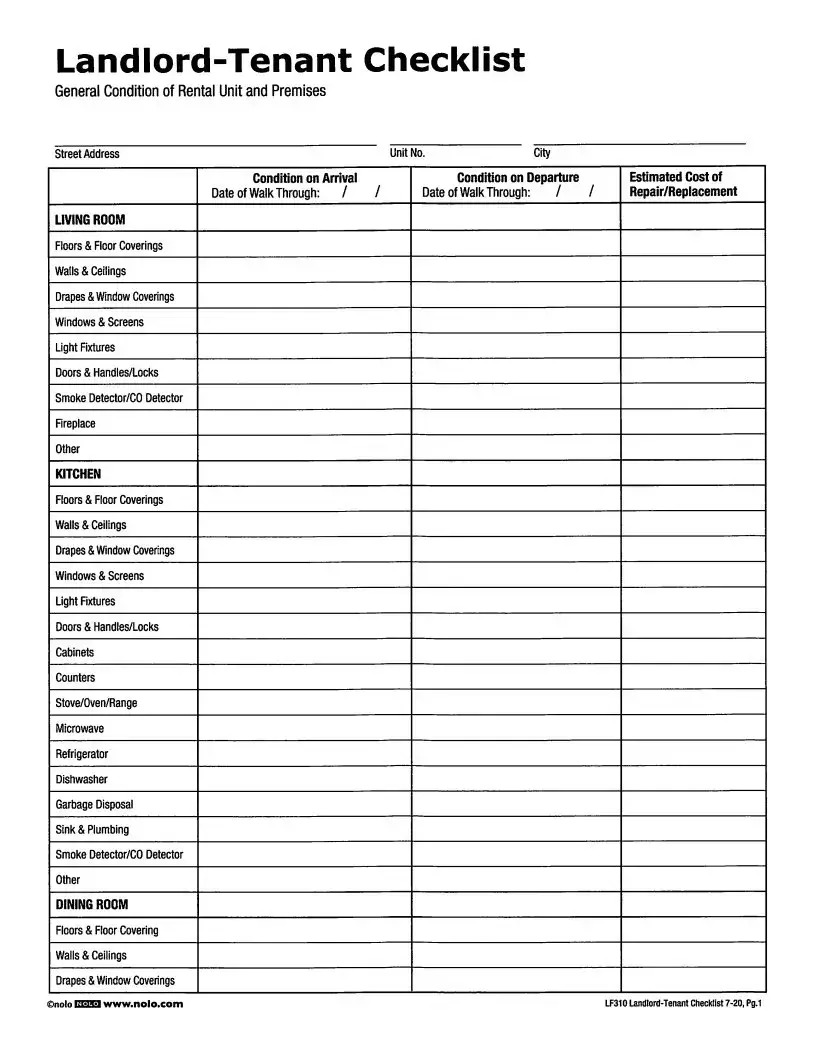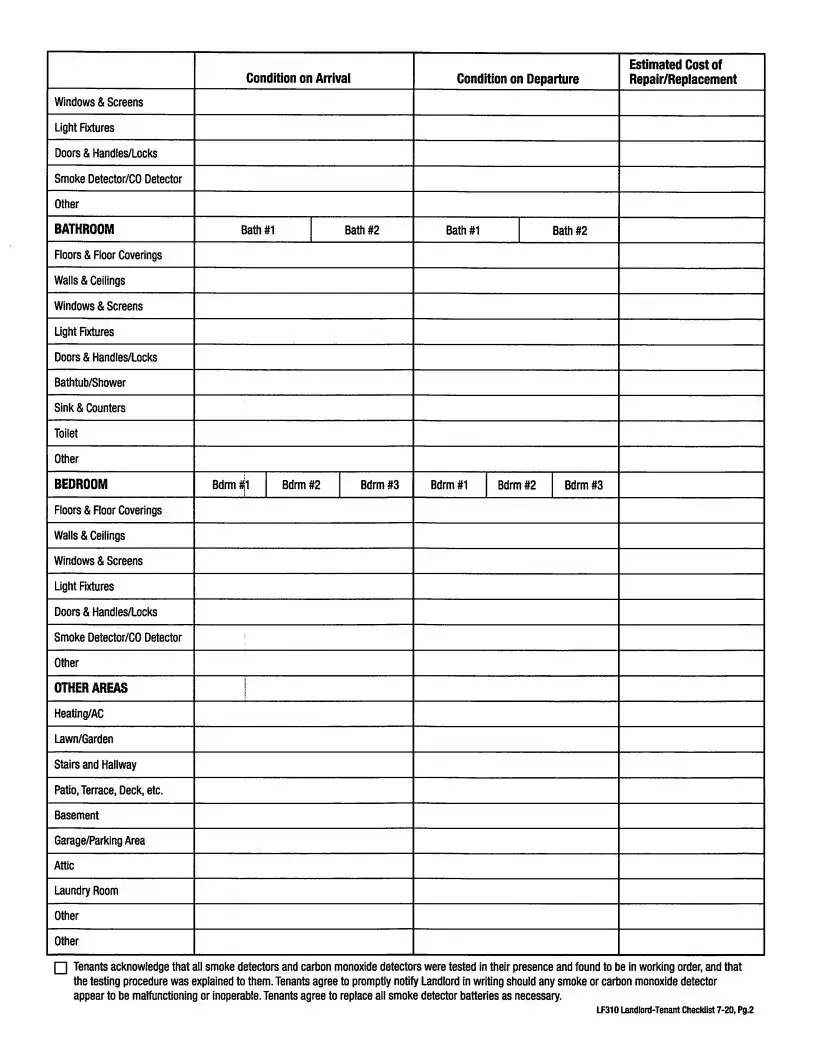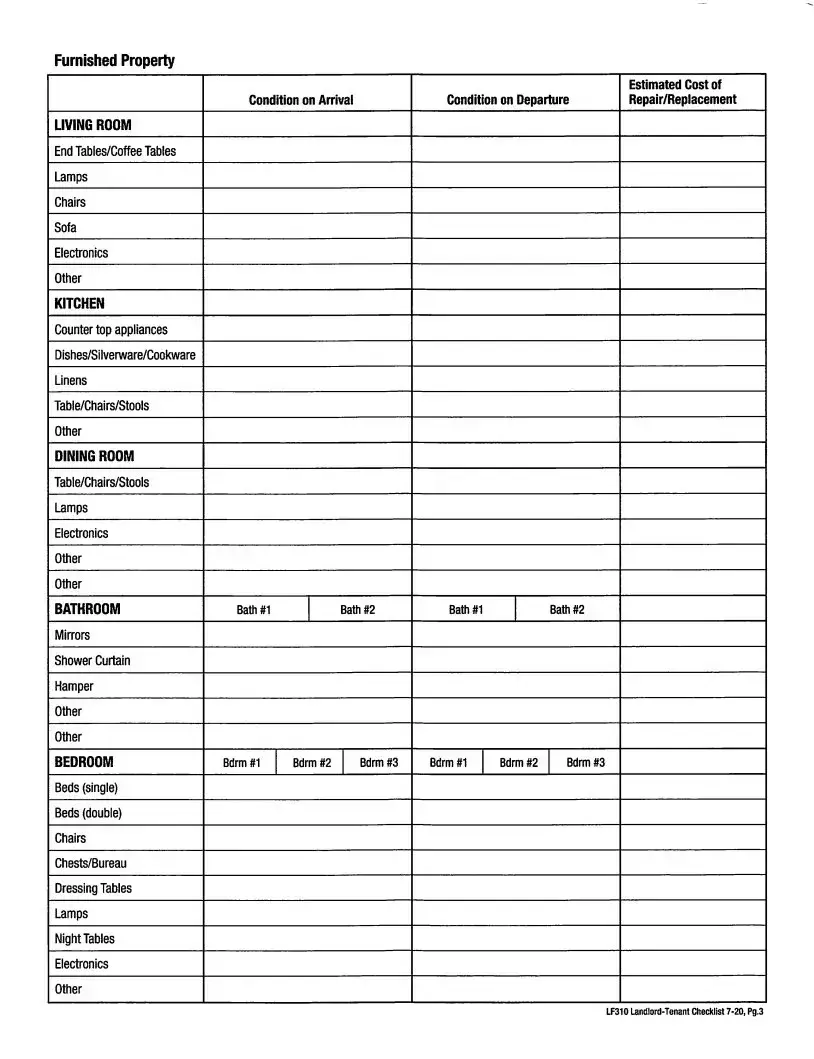What is the Lf310 Residential Lease form?
The Lf310 Residential Lease form is a legal document used in the United States to outline the terms and conditions of a rental agreement between a landlord and tenant. It specifies important details such as the identification of both parties, the rental premises, payment terms, and rules regarding the use of the property. This form helps protect the rights of both the landlord and tenant, ensuring clarity and mutual understanding.
Who is responsible for paying rent?
According to the Lf310 form, each tenant listed in the agreement is jointly and severally liable for the payment of rent. This means that if there are multiple tenants, they are all responsible for the full rent amount. If one tenant fails to pay, the landlord can seek the total amount from any of the tenants, making it crucial for all parties to understand their financial obligations.
What are the rules regarding occupancy?
The lease stipulates that the premises are to be used solely as a private residence for the tenants and their minor children. Guests may visit, but if they stay longer than what is agreed upon, it could be considered a breach of the lease. This rule helps maintain the property’s integrity and ensures that the landlord's expectations are met.
How is rent payment structured?
Rent is due on the first day of each month and must be paid in advance. If the first falls on a weekend or holiday, the payment is due the next business day. The lease specifies how rent can be paid, whether by mail, in person, or electronically, and it outlines acceptable forms of payment, including cash, checks, and electronic transfers.
What happens if rent is paid late?
If rent is not paid within the specified number of days after its due date, a late charge will apply. The lease clearly states the amount of the late fee and how it accumulates each day the payment remains unpaid. This clause encourages timely payments and helps the landlord manage their finances effectively.
What is a security deposit, and how is it handled?
The security deposit is a sum paid by the tenant at the signing of the lease to cover potential damages or unpaid rent. The tenant cannot use this deposit as the last month’s rent without written consent from the landlord. After the tenant vacates the premises, the landlord must return the deposit or provide an itemized statement of any deductions within a specified timeframe.
Can tenants sublet the property?
Tenants are prohibited from subletting any part of the premises or assigning the lease without the landlord’s prior written consent. This rule is in place to maintain control over who occupies the property and to ensure that the landlord is aware of all residents living in the unit.
What utilities are tenants responsible for?
Typically, tenants are responsible for all utility charges unless otherwise stated in the lease. The landlord may agree to cover specific utilities, but this should be clearly outlined in the agreement. Understanding who pays for what can prevent misunderstandings and financial disputes later on.
